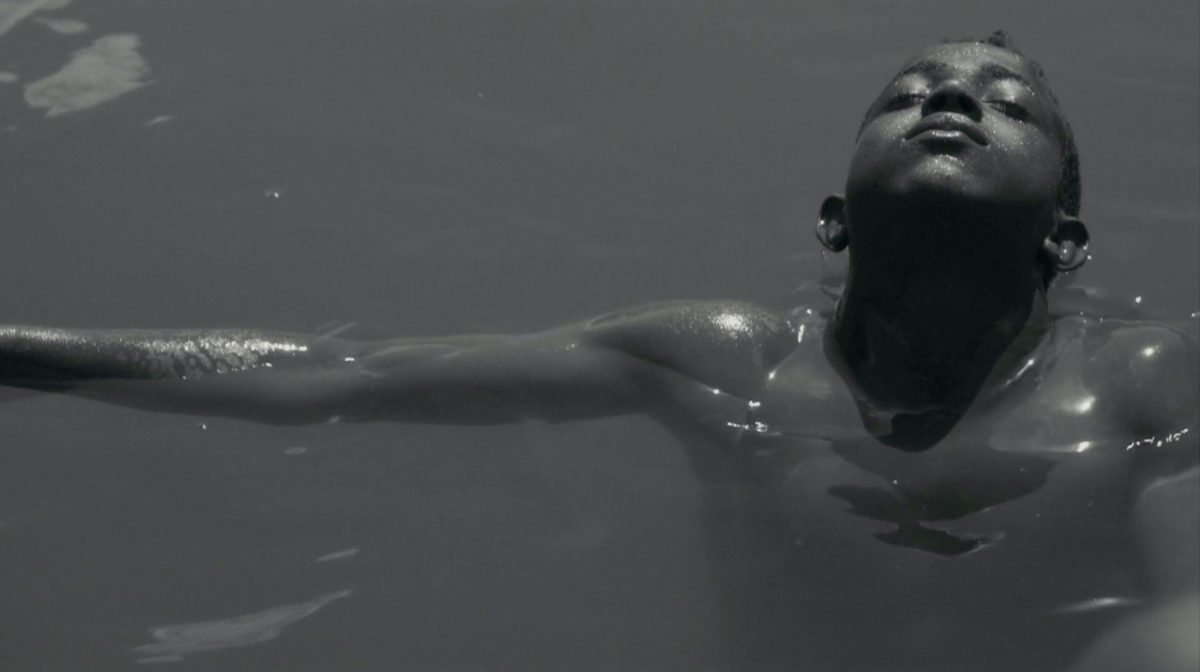Sledgehammer Delicacy
Smoke, water and billowing yards of fabric waft through Jessica Beshir’s Faya Dayi, set in a remote town in the Eastern Ethiopian highlands of Harar. In a scene that also graces the movie’s poster, teenage protagonist Mohammed floats in the milky waters of a local river, face turned towards the sunny skies, eyes closed. His fingers play a tender game with surface tension as they drift out of the frame. Ambient music and the sounds of rippling water maintain the hallucinatory soundscape which the director has created in cooperation with the composers of the original score, William Basinski, Adrian Aniol and Kaethe Hostetter.
Beshir has worked hard to imbue the 120 minutes allotted to her film’s subject, the rituals and myths surrounding the production and consumption of the stimulant drug khat, with an ethereality akin to a sedated, intoxicated state. “Chew, chew, chew” the men who spend their days growing, picking and wrapping the drug’s leaves urge each other on—and “chew, chew, chew” we do, not on actual khat, but rather two hours of sluggishly slow shots, aiming for the most calculated kind of cinematic beauty. Ostensibly subtle motifs such as the texture of a dress, curtains and a veil, the appearance of mysterious mists or the interplay of shadow and light are repeated long after their contrived digging for profundity has outstayed its welcome.
In order to tackle its vague mission of otherworldliness, Faya Dayi remains at a distance from the world of which the rural pocket of its setting is a part. It isn’t until the second hour of the film that we see a road and cars, slight hints that this place is in fact not untarnished by global capitalism. Brand logos, packaged goods and plastic waste are mostly absent from Faya Dayi. In the rare case of their appearance, they blend into the strange ahistoricism of the digital black and white images, an aesthetic choice which not only removes the story even further from historical specificity but also adds to the impression that the film strives for an elevation to artfulness with the paradoxical method of sledgehammer delicacy.
There are a few scenes that perforate the timeless ambience of the hallucinatory mode: Mohammed’s friend shares his plan to migrate north and seek his luck on the Egyptian border, a male voice mentions that “young people joined the peaceful protests” in 2015, coffee farming has become impossible since the river dried out, possibly as a consequence of climate change. It is in these moments that one glimpses the region’s ties to contemporary concerns. Subordinated to the film’s blinkered quest for gracefulness, they are left largely unexplored and remain missed chances at grappling with ethereality as a desire rather than an actuality.
